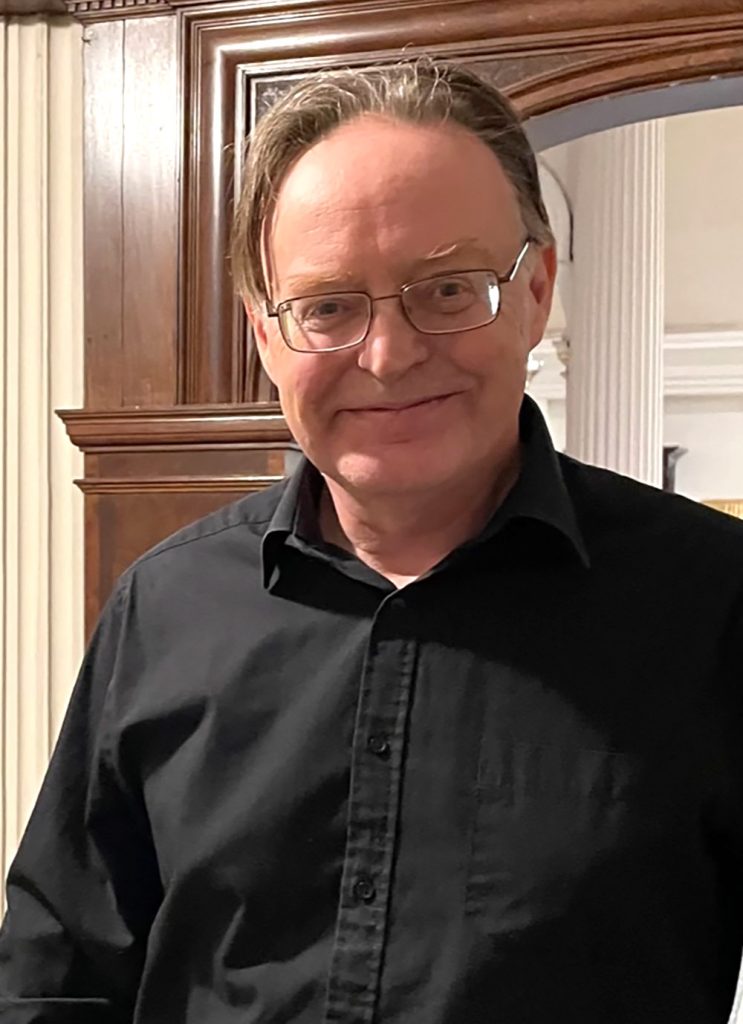A Review of Fauré Come and Sing
Saturday 13 November 2021
It was a real joy to welcome singers back on the eve of Remembrance Sunday, as the annual Come and Sing Requiem returned to the Parish Church after the silence of the pandemic year. The inspired idea of organising these ‘scratch’ performances of four great Requiems was conceived by Jane Garland in 1995, when the series began with Fauré’s Requiem conducted by Lee Ward. The task of organising these event is now in the capable hands of Handley Stevens and the Friends of the Music, and how good it was that 25 years later the same work was sung on Saturday under the baton of Lee’s former pupil, Aidan Coburn.
Aidan first sang in the choir at the Parish Church at the age of 16, and has faithfully sung here ever since. He also performs widely as a conductor, and recently took on the training of our Junior Choir as well as the direction of the Community Choir. So he was a natural choice to direct this year’s ‘scratch’ performance when the solo soprano part was taken by the Choristers of his Junior Choir. It made for a very happy event in every way: undoubtedly both singers and audience were glad to be here again, singers especially loving this opportunity to sing out in our beautiful church supported by our resourceful musicians.
Fauré’s Requiem is a gentle, consolatory work – “a lullaby of death”, his contemporaries called it – and the composer himself said of it that “[it] does not express the fear of death … I see death as a happy deliverance, an aspiration towards happiness above.” The chorus plays a large part in creating this overarching sense of consolation, and Saturday’s singers responded beautifully to Aidan’s sensitive shaping of flowing melodic lines, but also managed well occasional outbreaks of jubilation as at the Hosanna, and undercurrents of anxiety at Dies illa, dies irae.
The gentle chorus sound was an ideal background for Malachy Frame’s warm, rich baritone, pleading eloquently for the souls of the departed in the Offertorium and later with a more passionate intensity in the Libera me. (How fortunate we are to have this intelligent musician in our regular professional choir!)
Right at the heart of Fauré’s Requiem – literally, in the fourth movement – lies the setting for soprano of the Pié Jesu text. The Choristers rose well to this challenge and Aidan drew lovely phrasing from them here, as well as in the final ethereal antiphon In Paradisum which ends the work.
For all its beauty Fauré’s Requiem is a short work, and needs something added to it to fill out a programme. On Saturday Geoffrey Webber chose to interpolate two organ pieces between its third and fifth movements. Two works by César Frank were inspired choices. Both were published in 1884, which happens to be the year when Henry Willis installed our present organ here (his second for Hampstead); so in both pieces Geoffrey could demonstrate how much Willis owed to the influence of time he had spent in Paris with contemporary French organists and organ-builders. In fact we may have heard our Willis organ in a new light as Geoffrey explored its wide variety of stops – open diapason and swell trompette in the Cantabile full organ in the menacing Pièce héroique, and best of all the lovely flute and reed pipes which he used to accompany the singers throughout the Requiem. A great opportunity indeed to endorse (although we already knew) what a very fine organist we have in our newly-appointed Director of Music.


